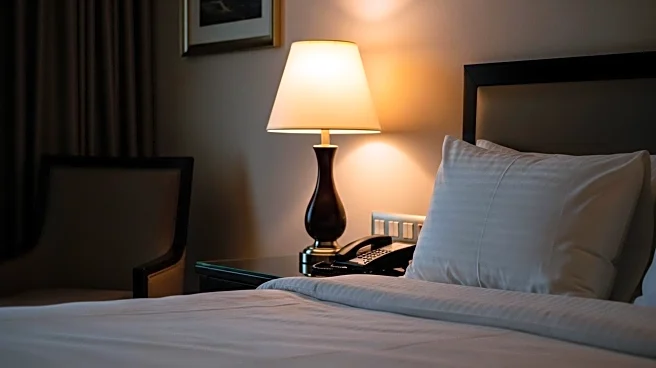What's Happening?
A historic steam supply warehouse in Seattle's Pioneer Square has been transformed into Populus Seattle, a 120-room boutique hotel. The project, led by The Miller Hull Partnership in collaboration with Urban Villages, Curioso, Aparium Hotel Group, and JTM Construction, is part of the RailSpur micro-district initiative aimed at reviving a dormant rail corridor. The adaptive reuse of the 1907 Westland Building involved overcoming structural challenges, such as limited daylight and ventilation, by expanding a central Sky Court and repositioning the vertical circulation core. These changes enhance natural light and air flow while maintaining the building's historical integrity.
Why It's Important?
The transformation of the Westland Building into Populus Seattle is significant for several reasons. It serves as a model for historic preservation and sustainable urban redevelopment, demonstrating how old structures can be repurposed to meet modern needs while revitalizing neighborhoods. The project addresses structural limitations with innovative architectural solutions, setting a precedent for future adaptive reuse projects. By preserving the building's historical elements and enhancing its functionality, Populus Seattle contributes to the cultural and economic vitality of Pioneer Square, attracting visitors and boosting local businesses.
What's Next?
The successful completion of Populus Seattle may inspire similar adaptive reuse projects in other historic districts, promoting sustainable urban development. Stakeholders, including local government and preservation societies, might explore further opportunities to repurpose other historic buildings in Seattle. The hotel's opening could lead to increased tourism and economic activity in the area, encouraging investment in surrounding properties and infrastructure improvements.
Beyond the Headlines
The adaptive reuse of the Westland Building highlights the ethical and cultural importance of preserving historical architecture. It raises questions about balancing modern development with heritage conservation, encouraging dialogue on sustainable practices in urban planning. The project also underscores the potential for historic buildings to serve as catalysts for community engagement and cultural enrichment.










